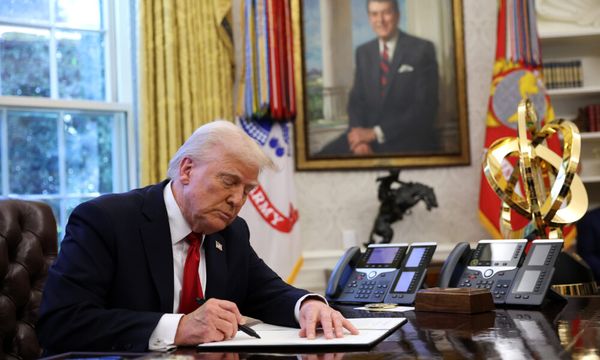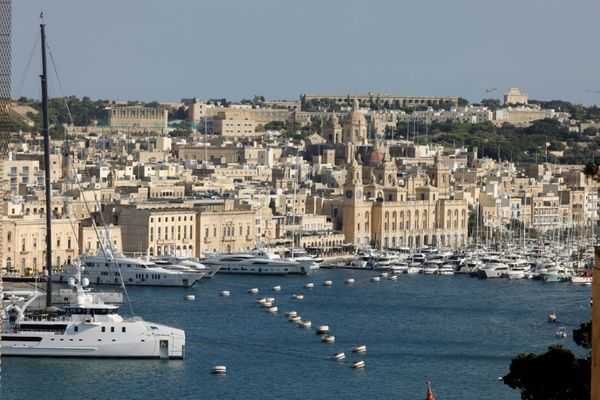PHILADELPHIA — It was one of the biggest disasters in recent city history: A speeding Amtrak train careened off the tracks and crashed in Philadelphia's Frankford neighborhood in 2015, killing eight people and injuring more than 200.
In the years since, Amtrak has agreed to pay more than a quarter-billion dollars to settle lawsuits with victims. The railroad was also ordered to install preventive safety measures along the Northeast Corridor.
And the National Transportation Safety Board conducted a yearlong probe of the cause, finding that engineer Brandon Bostian — who survived — likely lost his bearings before accelerating into a curve, possibly because he was distracted by radio chatter about a rock striking another nearby train.
Still, in all that time, one question has remained unanswered: Were Bostian’s actions that day a tragic mistake — or a crime?
Starting this week, a Philadelphia jury will be tasked with providing an answer.
Bostian, 38, is scheduled to face trial beginning Tuesday on eight counts of involuntary manslaughter, hundreds of counts of reckless endangerment, and causing a catastrophe. The proceedings, expected to last up to two weeks, will likely mark the culmination of a highly unusual legal saga — a yearslong affair in which the charges against Bostian have wound a twisted path through the criminal justice system.
The trial before Common Pleas Court Judge Barbara McDermott is likely to feature testimony from surviving victims, first responders and Amtrak employees. In previous hearings, witnesses discussed forensics from the scene and data from an onboard event recorder.
An NTSB report released a year after the crash concluded that Bostian lost his “situational awareness” before speeding up to 106 mph ahead of a curve, where the limit was 50 mph. An NTSB official at the time called it “a very basic error” likely caused by Bostian’s monitoring of reports about rock-throwing. The NTSB said Bostian was not intoxicated or using his cell phone.
Bostian has maintained that he can’t remember many specifics before the derailment. And his lawyer, Brian McMonagle, said in an interview last week that if anyone is criminally responsible for the wreck, it’s the people, never identified, who were throwing rocks at trains — actions that left Bostian, an otherwise conscientious engineer, disoriented.
“It caused such havoc on the rails that it led to this disaster,” McMonagle said. “And Mr. Bostian, unfortunately, has now been victimized by it, as well.”
The father of a woman who died in the crash, who asked not to be identified criticizing the railroad, agreed that Bostian has been unfairly blamed for the disaster. He called Bostian’s prosecution “horrendous” and said Amtrak and government officials bore greater responsibility for failing to install speed controls on the rails beforehand.
“It was not an individual’s issue,” he said. “It was a governmental issue that permitted [Amtrak] to not spend money” on effective safety measures.
Larry Saia, a close friend of Giuseppe Piras, an Italian citizen who died on board, said the trial is “way past due.”
Bostian “did twice the speed [limit] going around a curve,” said Saia, 67. “He survived and eight people died. There’s something not right there.”
The state Attorney General’s Office, which is prosecuting the case, declined to comment ahead of trial. But in recent court filings, prosecutors have argued that McDermott should bar Bostian’s lawyers from citing the NTSB’s opinion that he lacked situational awareness. And they said he should not be allowed to point to the lack of speed controls on the rails.
“Lack of burglar alarms does not cause burglaries, and lack of smoke detectors does not cause fires,” prosecutors wrote in court documents earlier this month. The lack of a railway safety system, they added, “cannot by its absence make reckless conduct any less reckless, or any less the cause of the victims’ deaths.”
The fatal crash
Bostian was the sole engineer on board Train 188 on May 12, 2015. The Northeast Corridor was his new assignment, but he knew the route between Washington and New York City well: As part of his training, court documents say, Bostian had been required to memorize the route, including its physical characteristics and speed limits.
Just after 9 p.m., Bostian pulled the train out of 30th Street Station to head toward Manhattan. For several miles, court documents say, he complied with posted speed limits and navigated several bridges and curves.
But as he approached an S-shaped curve in Frankford, the documents say, Bostian moved the throttle to full power — accelerating from 65 to 106 mph.
He attempted to hit the brakes as the train entered the turn. But it was too late.
The final speed before the train derailed was 104 mph.
The locomotive and seven cars veered off the tracks and ended up strewn across grass, mud, and other train tracks. The business-class car, known as Car 1, crumpled like an aluminum can.
In each of the train’s six other cars, passengers, luggage, and seats were violently tossed around.
Four of the eight passengers who died perished after being ejected through shattered windows, the NTSB found.
Hundreds of others suffered broken bones, damaged organs, or worse — and they were forced to stumble around in the dark near the hulk of the dismantled train as first responders rushed to the scene.
Complex legal history
A year after the crash, the NTSB said it found that Bostian, for six minutes before the crash, had been closely monitoring dozens of radio dispatches. A SEPTA train had made an emergency stop nearby after being struck by a rock, and the NTSB said the resulting commotion may have caused Bostian to lose track of where he was.
The Philadelphia District Attorney’s Office considered that explanation as part of a two-year probe of potential criminal charges. In 2017, just as the statute of limitations was set to expire on one possible offense — reckless endangerment — prosecutors said they would not charge Bostian.
“We cannot conclude that the evidence rises to the high level necessary to charge the engineer or anyone else with a criminal offense,” the DA’s Office said in a statement.
The next day, civil lawyers representing victims of the crash filed a private criminal complaint, urging the DA’s Office to reconsider. Prosecutors declined.
But a judge who heard the matter in court ordered Bostian to be charged. The DA’s Office recused itself because of its publicly stated opposition. The case was then referred to the Attorney General’s Office.
That was only the beginning.
In 2017, a Municipal Court judge dismissed the case against Bostian, calling the crash an accident and not a crime. Within a few months, that decision was overturned by a Common Pleas Court judge.
The case then ping-ponged in and out of court again — with a second judge dismissing the case in 2019, only for it to be resuscitated by the Superior Court in 2020.
McMonagle, Bostian’s lawyer, said he’s “never seen anything like this before — ever.”
‘Day of reckoning’
That back-and-forth is not expected to be part of the trial. But Tom Kline, one of the lawyers who helped file the private complaint, said it may have provided an unusual benefit: Few prosecutions are subjected to such judicial scrutiny before being put before a jury.
“This is not some case where a prosecutor has made a decision,” Kline said. “Rather, this is a case where an appellate court of Pennsylvania has carefully reviewed the facts.”
Bostian, who has been free on bail throughout the long history of his case, could face years behind bars if convicted.
Saia, the friend of Piras, who died in the crash, said he wanted to see Bostian convicted because he said the conductor’s actions caused deep pain to Piras’ friends and family on the Italian island of Sardinia.
But the father of another victim held an opposite view. Asked whether Bostian should be convicted, he replied: “Absolutely not.”
“They needed somebody to be primarily responsible, and instead of the train company and the government, which should’ve been controlling this, they did him,” the father said.
Kline, for his part, declined to say how he believed the panel should rule.
Many of his clients, he said, are grateful for the trial — an event he called “a day of reckoning,” whatever the outcome.
“That’s what we’ve been fighting for all these years,” Kline said. “Not to make the final judgment, but for the families to have an opportunity for a jury to make that determination.”
———
(Staff writer Mensah M. Dean contributed to this article.)
———







